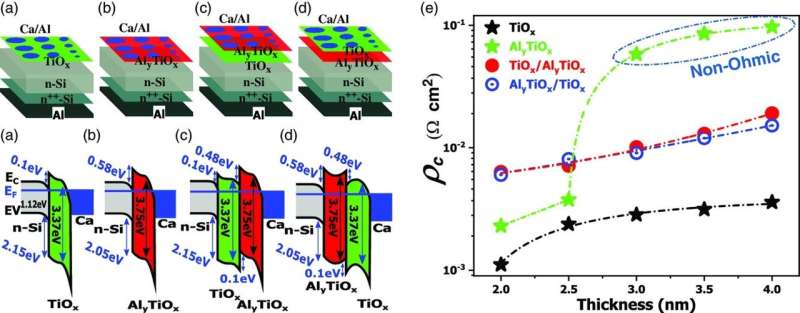Adding passive contacts to spur solar cell development

An increase in the efficiency of solar panels may be on the horizon, as research from The Australian National University (ANU) reduces their current limitations.
ANU researchers have found a way to improve the performance of silicon photovoltaic (PV) or solar cells. This is done through the addition of “passivating contacts” between the metal and silicon parts of the solar cell, making it more productive.
“These findings will help push the performance of silicon solar cells closer to their theoretical limit,” Mohamed Ismael, lead ANU researcher and Ph.D. candidate said.
“Each day, the sun produces significantly more energy than needed to power the whole planet. The only limitation is our ability to economically convert it to electricity,” he said.
Solar cells are devices that convert light energy in the form of photons into electrical energy. As it stands, solar cells aren’t operating at their maximum capacity due to substantial electrical losses associated with the direct contact of metals with silicon.
“Transition metal oxides such as titanium oxide have many qualities that make them ideal as passivating contact layers,” Dr. Lachlan Black said.
“This isn’t a new idea, but the way in which we combined these layers has produced better results and higher operating voltages than anything previously reported.”
The research team is hoping to develop the technology to a point where it can be applied to industrial solar cells on a large scale.
The PV market is a multi-billion-dollar industry, with silicon solar cells contributing to 95 percent of all commercial solar cells. They are predicted to remain dominant for the foreseeable future given their advantageous properties compared to competitors.
“If successful, we could see our technology in almost all new solar panels installed on your roof or utility-scale solar plants,” Dr. Black said.
Some practical issues still need to be addressed before the technology can be implemented, but the PV community is already working to solve these challenges.
“Improving the efficiency of solar cells guarantees more clean energy at a reduced cost. This not only helps to address climate change, but opens up new economic opportunities for this low-cost clean energy,” Ismael said.
The research paper was published in Solar RRL.
Mohamed M. Shehata et al, Outstanding Surface Passivation for Highly Efficient Silicon Solar Cells Enabled by Innovative Al y TiO x /TiO x Electron‐Selective Contact Stack, Solar RRL (2022). DOI: 10.1002/solr.202200550
Citation:
Adding passive contacts to spur solar cell development (2022, November 3)
retrieved 3 November 2022
from https://techxplore.com/news/2022-11-adding-passive-contacts-spur-solar.html
This document is subject to copyright. Apart from any fair dealing for the purpose of private study or research, no
part may be reproduced without the written permission. The content is provided for information purposes only.
For all the latest Technology News Click Here
For the latest news and updates, follow us on Google News.

